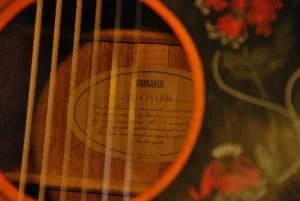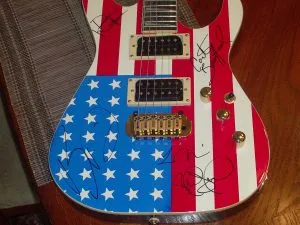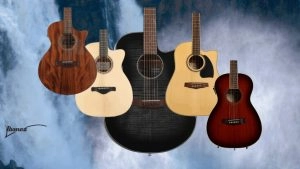If you’re an aspiring guitarist at the beginning of your musical journey, there’s a good chance you’re learning the major scales.
And if you’re not… you should be!
One of the first scales you should learn is the D major scale. With only two sharp notes in its key signature, D major is a common key for many popular songs.
Once you learn the notes and understand the scale’s theory, you’ll feel much more comfortable navigating the entire fretboard and perfecting the other major scales.
In this article, I’ll explain the D major scale and offer some tips and tricks I’ve learned over the past two decades of playing guitar that can help you understand and play the scale quickly and proficiently.
• • •
Notes of the D Major Scale
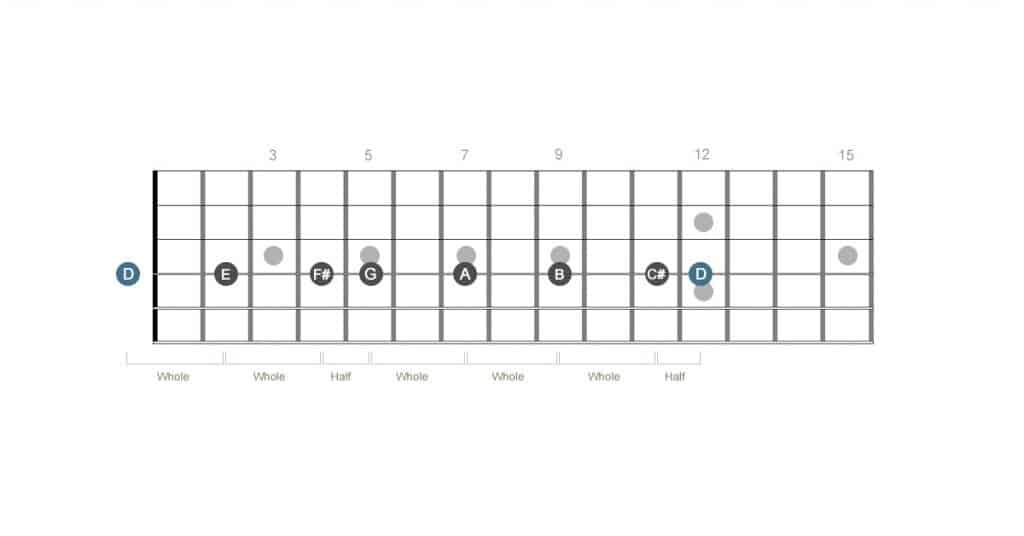
The D major scale comprises the following seven notes with two sharps: D, E, F#, G, A, B, C# — and then back to D (the octave).
Start by practicing the scale from the root note — D — to one octave up. As you become comfortable, though, it’s important to run the scale from bottom to top, starting from each of the notes.
For example, run the notes of the D scale from G A B C# D E F# and G. This will prevent your fingers from adapting muscle memory from solely the root notes of the scale and make you comfortable playing it from multiple positions.
This practice also introduces the concepts of intervals into your playing.
• • •
Intervals of the D Major Scale on Guitar

Intervals are the music theory magic wands that turn the notes of a scale into numbers. The root note, D, is one (1); E is two (2); F# is three (3), and so on.
- Root (R): D
- Major 2nd (∆2): E
- Major 3rd (∆3): F#
- Perfect 4th (p4): G
- Perfect 5th (p5): A
- Major 6th (∆6): B
- Major 7th (∆7): C#
- Octave (R): D
Understanding intervals is very helpful in understanding chords. A Dmaj7 chord, for instance, has a C# in it, which causes that beautiful jazzy dissonance when played with a D major chord.
• • •
The D Major Scale On Guitar: How To Play It
Let’s get to it: How exactly do you play the D major scale on your guitar? I’m going to take you through the most helpful ways to master this scale.
Let’s start at the bottom of the fretboard on the open fourth string (D string) and use fretted and open strings, similar to how you would shape an open D chord.
After plucking the open D (fourth string), fret the second fret on that string for the E note and the fourth fret for the F#. Next is the open G (third string) and the second fret of that string for the A. Strum an open B (second string), then the second fret of that string for the C#, and, finally, the third fret of that same string for the D one octave higher.
Now, if you only master that version of the D major scale, you’re going to limit your knowledge of the fretboard and your overall ability to play the guitar.
That’s why you need to learn how to play all the D major scale positions.
D Major Scale Positions On Guitar
The D major scale can be played across five main positions, known as the CAGED system.
Each position features the same notes of this commonly used scale, but they’re played from different sections of the fretboard, allowing you to learn the notes of each fret.
Open Position (D Position)

The D in the CAGED system is the fifth letter, but as you could probably guess, it’s the open position for the D major scale.
To play the D major scale in the open position, start by shaping an open D chord at the bottom of the fretboard. This is one of the first chords you likely learned as a beginner player.
If you’re playing just one octave, you’ll start on the fourth open string (D) and then follow the suggested fingerings in the diagrams above. You can also start on the open sixth string (E) and work your way up a couple of octaves.
Here’s how the intervals of the scale look for this position:
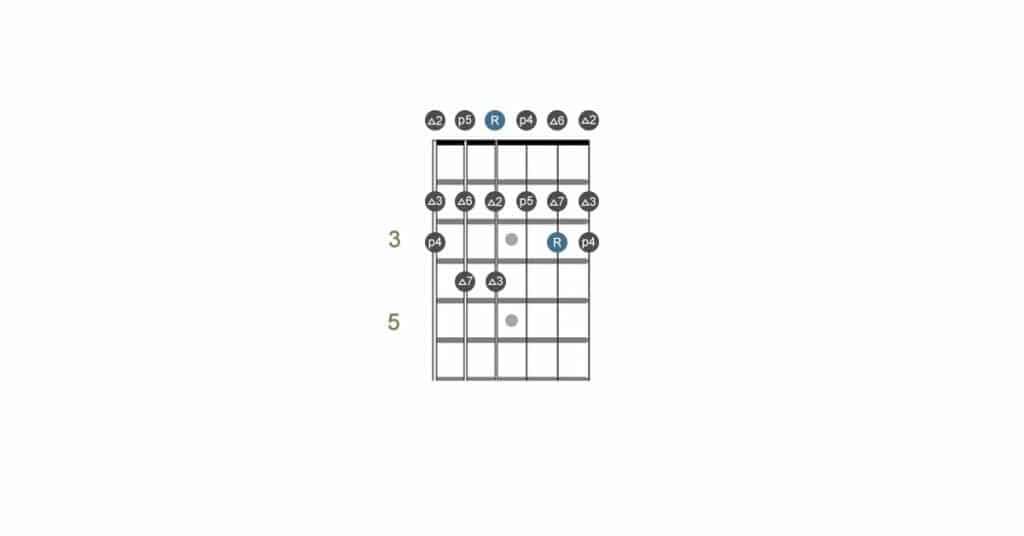
And here’s the guitar tab for the open position:

Position 1 (C Position)

If you shape a C chord and move it up two frets (two half steps), the three notes you’re fretting become a D chord. That’s the idea behind the first position of the CAGED system.
If you barre the second fret and shape the C chord, you’ll get a good idea of how to play this position.
I’ve always said this position is one of the more difficult across all scales, but it’s quite useful.
Here’s the C position of the D major scale with its intervals:

And here’s the guitar tab:

Position 2 (A Position)

You’ll barre the fifth fret and shape an A chord to tackle the second position (A position).
And here we have the intervals:

Tab:

Position 3 (G Position)

Barre the seventh fret and shape a G chord, with the bass note on the 10th fret of the sixth string to play this position.
And the position with intervals looks like this:

This is the tab for the G position:

Position 4 (E Position)
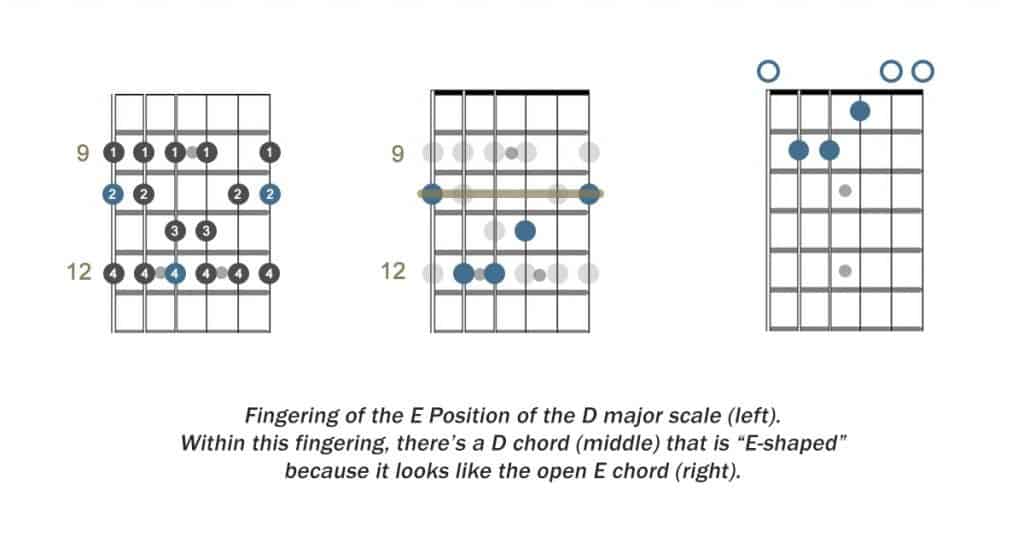
The fourth position is shaped using a standard, AKA “E-shaped” D barre chord across the 10th fret.
Here’s the E position of the D major scale with intervals:

And here is the tab for the E position:

Position 5 (D Position)

The fifth position is simply an octave above the open position. Barre the 12th fret and shape a standard D chord.
And here we have the position with its intervals:

And the position’s tab:
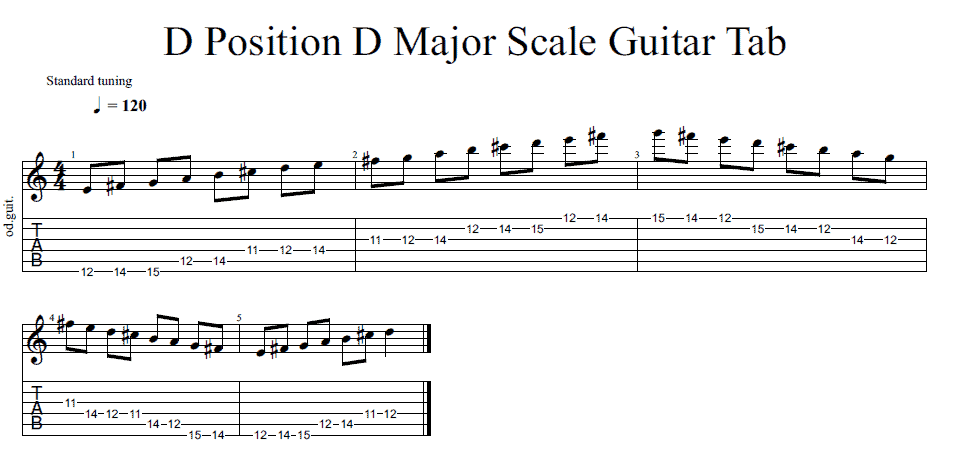
Single Octave D Major Scale Patterns
Mastering all five positions above is quite an accomplishment, but it’s no easy task. Practicing single-octave patterns is a great way to work your way toward that goal.
I’ll explain how to play a single octave of the D major scale from four of the six strings on the guitar.
How To Play The D Major Scale Starting From The 6th String

There are three single-octave patterns you can play starting from the sixth string.
- Despite being the lowest string on the guitar, you’ll start this scale on the 10th fret of the sixth string and work your way up to the 12th fret of the fourth string, as shown in the first diagram above.
- Another way is to again start on the 10th fret with your index finger, then go up to the 12th fret with your pinky. You’ll then play the ninth fret on the fifth string, followed by the 10th fret and 12th fret again. Finish the scale by fretting the ninth fret of the fourth string, followed by the 11th and 12th frets.
- The third option is to start on the 10th fret with your pinky and then move to the seventh fret of the fifth string, followed by the ninth and 10th frets. Next, move to the seventh fret of the fourth string, followed by the ninth fret. Finish the scale on the third string by fretting the sixth and seventh frets.
How To Play The D Major Scale Starting From The 5th String

When playing the D major scale from the fifth string, you’ll start on the fifth fret and work your way up to the seventh fret of the third string.
Another way is to start with the fifth fret of the second string and work your way up to the seventh fret of the third string.
My personal favorite way of playing this exercise is starting on the fifth fret of the second string and working your way up to the third fret of the second string.
How To Play The D Major Scale Starting From The 4th String

From the fourth string, you’ll start with an open D and work your way up to the octave on the third fret of the second string.
You can also start on the 12th fret of the fourth string and work your way up to the 15th fret of the second string; or from the 12th fret of the fourth string up to the 10th fret of the first string.
How To Play The D Major Scale Starting From The 3rd String

A single octave D major scale from the third string starts on the seventh fret and ends on the 10th fret of the first string.
Similarly, you can start on the seventh fret of the third string and work your way up to the 10th fret of the first string.
Finally, you can start on the seventh fret of the third string and skip every other fret before making your way to the ninth and 10th frets of the first string.
D Major Scale Guitar Chords
The D major scale comprises notes that make up a number of different chords.
D Major
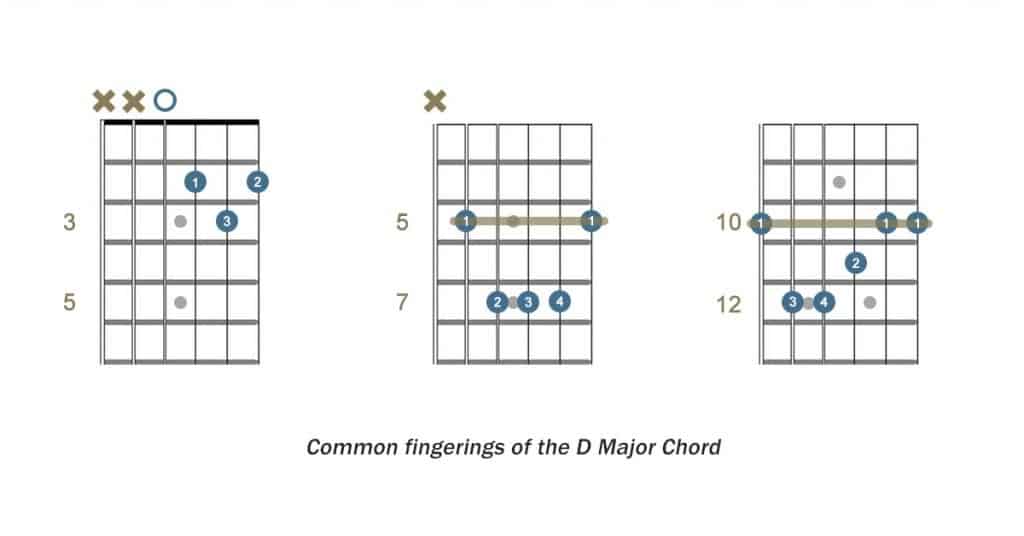
The root chord comprises three notes: D, F#, and A. That is the first, third, and fifth of the scale.
E Minor
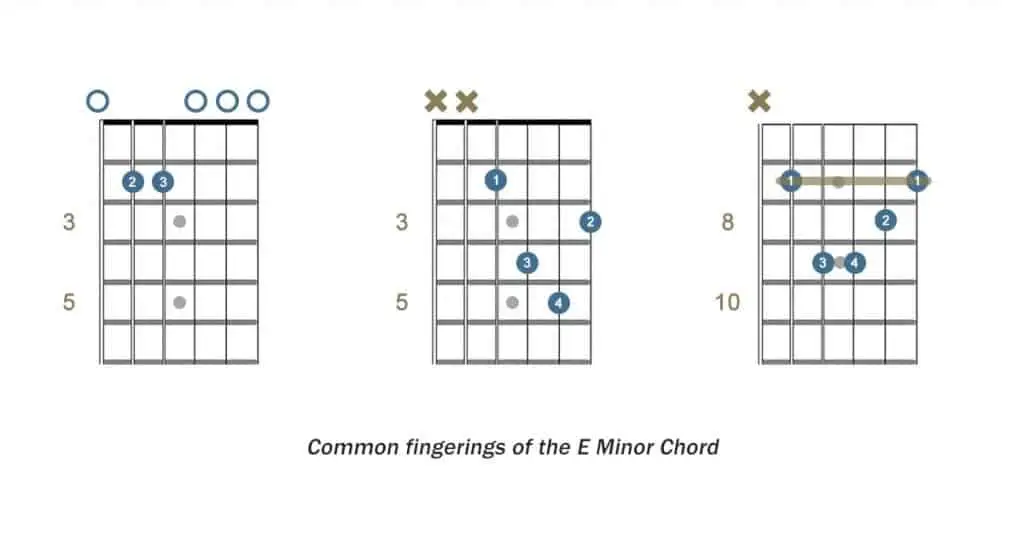
An E minor chord is made up of E, G, and B, the second, fourth, and sixth degrees of the D major scale. Em is a relative minor of D major, meaning if you play the D major scale starting with the E as the root note, you’ll also play the E minor scale because they have the same notes.
F# Minor

An F# minor chord is made up of F#, A, and C#. It’s one of the three relative minor chords found in the key.
G Major
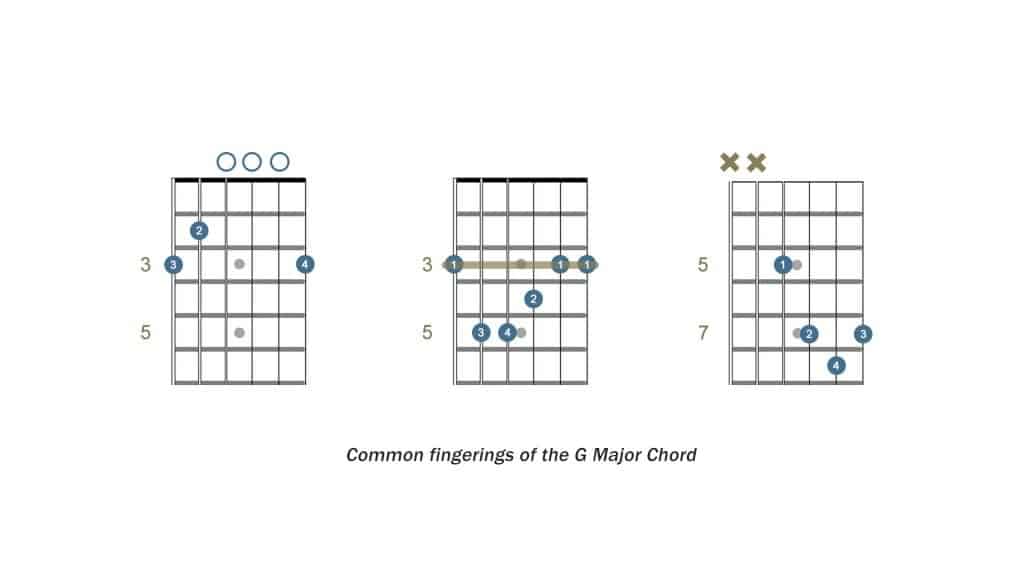
A G major chord is made up of G, B, and D, which are the scale’s fourth, sixth, and eighth (root) degrees. The only difference between a D major scale and a G major scale is the C in the G scale and the C# in the D scale.
A Major
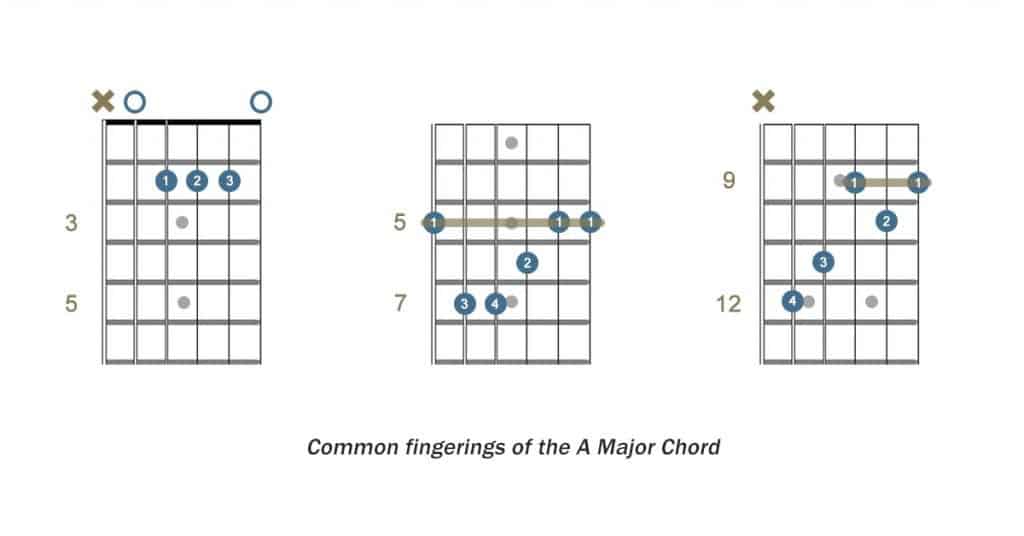
An A major chord — which is commonly used when playing in the key of D major — is made up of an A, C#, and E.
B Minor
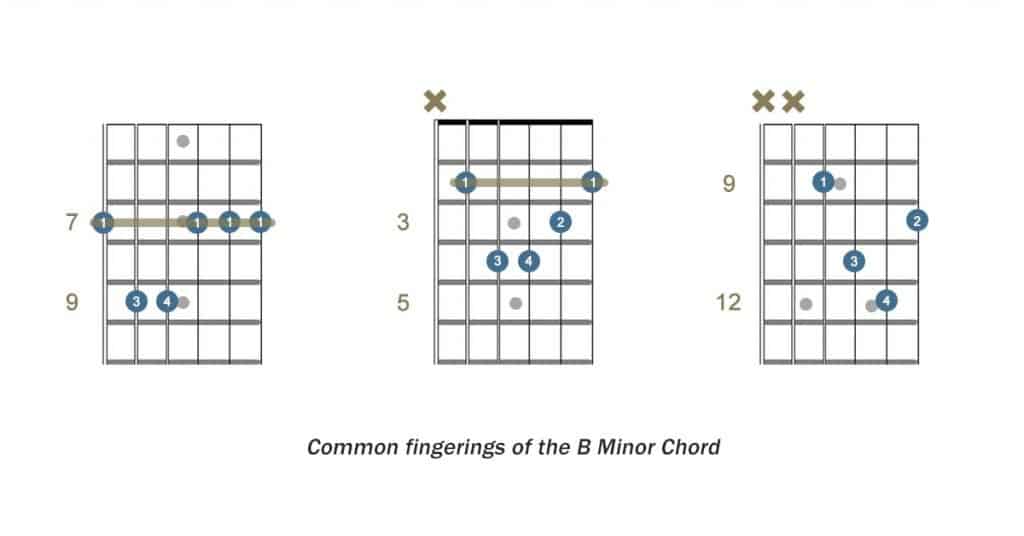
A B minor chord is made up of B, D, and F#. If you use the same key signature as the D major scale but start on the B, you’ll know the B minor scale. You can actually use the B minor scale on D major songs for soloing purposes.
C# Diminished
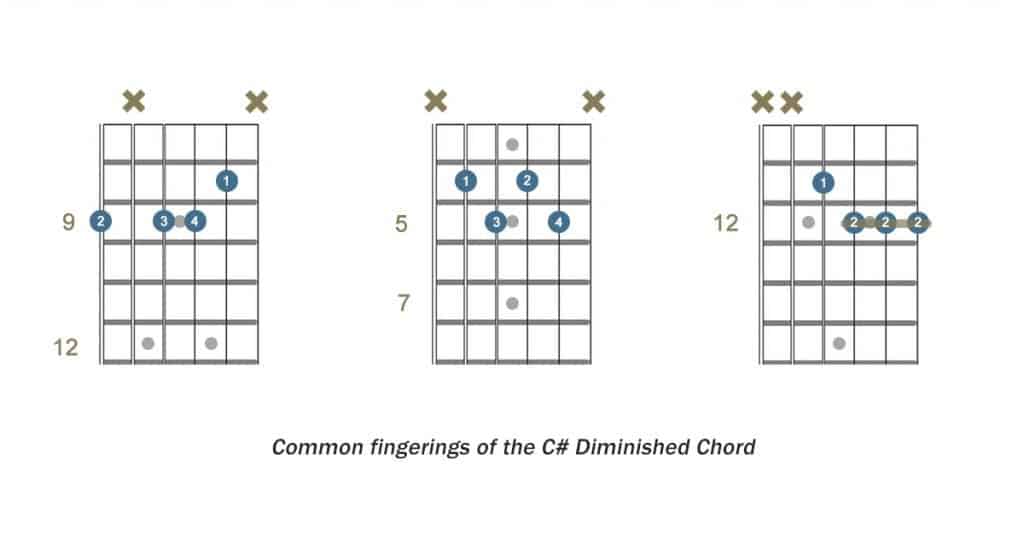
A C# diminished is made of a C#, E, and G. The C# diminished scale has the same notes as the D major scale.
D Major Scale Exercises On Guitar
There are a lot of YouTube guitar lessons from a handful of people that produce REALLY good videos. But one of my favorites is this pretty basic warm-up video from OutstandingGuitar. You can apply these concepts to any major scale on the guitar.
Mike Hedding also does a great job at teaching the D major scale. I appreciate the extra camera shots showing the best ways to fret the scale.
D Major Scale Songs
Here are some popular songs in the key of D that you can practice after learning the D major scale. These songs use a D major chord progression.
“Thinking Out Loud” by Ed Sheeran
“Human Nature” by Michael Jackson
• • •
Learn Your Major Scales
Learning the major scale starts your deeper understanding of the guitar and music theory. If you can learn the various scale shapes — including open chord shapes — and five distinct patterns, you can apply that knowledge to all key signatures.
D major is a great scale to start with. Remember, there are two sharp symbols, but this is one of the most common scales.
Practicing scales is one of the best things you can do to take your musical journey to a new level.
Last but not least, make sure to check out our other major scale articles: A, C, E, and G.






